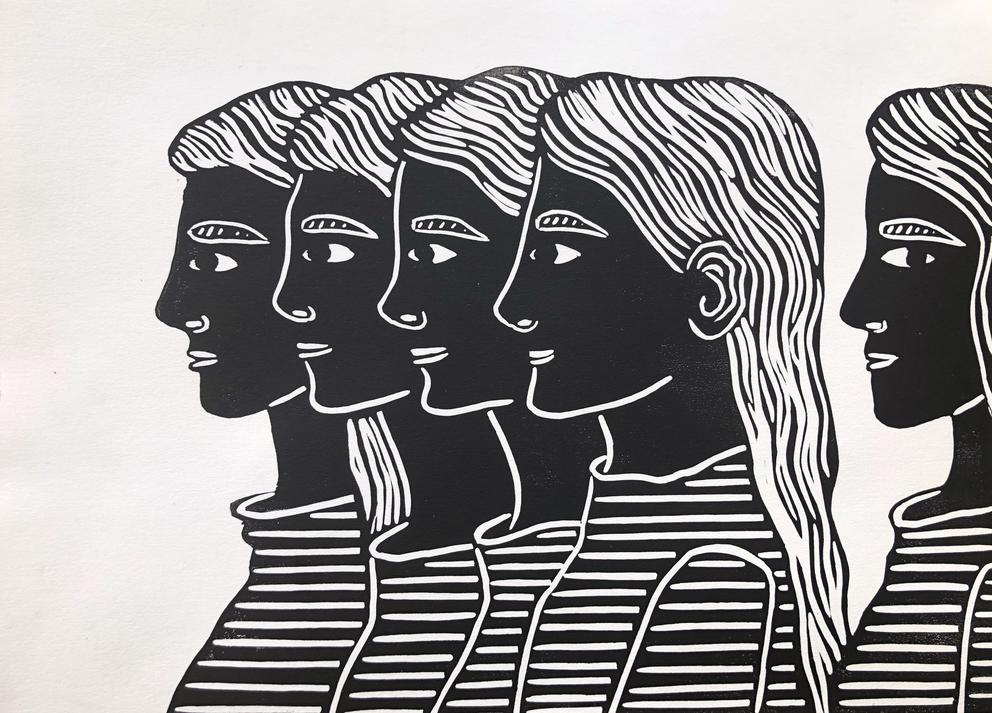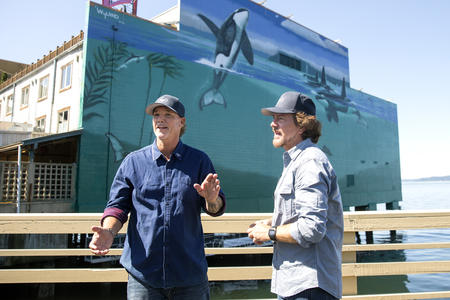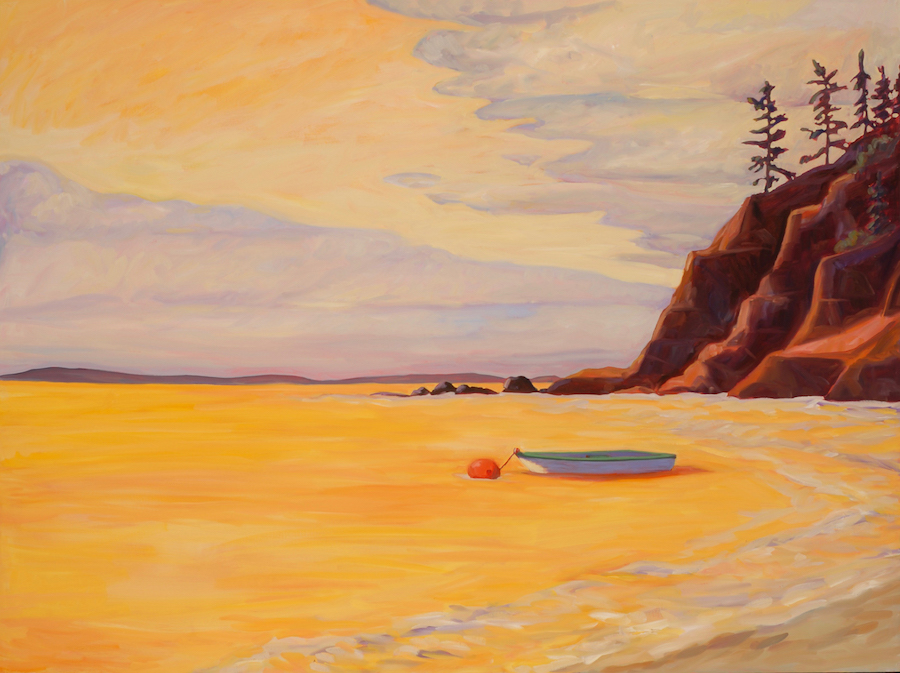
Seattle Art Fair
It’s that time of year again — when the blocks surrounding the SoDo sports venues are suddenly filled with fans of a different stripe: arts aficionados. The fifth annual Seattle Art Fair kicks off Thursday evening, showcasing work from some 100 galleries in Seattle and beyond. Stepping into the hive of white cubes can feel a little overwhelming at first, but don’t panic — just pick an aisle and let whatever catches your eye pull you along. Remember: you are not required to see everything! But you’ll probably want to check out the internet sensation known as “Bread Face” (the Brooklyn blogger who, um, presses her face into bread) to see what the hype is about. You should definitely seek out the four illustrated banners by Seattle’s own Gregory Blackstock, the self-taught autistic artist known for his detailed groupings (banners include variations of boxer dogs and World War II Russian Lavochkin fighter jets). And you might want to visit Swedish artist duo Bigert & Bergström’s “Incubator for Earthquakes,” a plastic dome covering a dining table whose settings jiggle with unexpected tremblors — good practice for “the big one.” –B.D.
If you go: Centurylink Field Event Center, Aug. 1-4, times vary. ($35-$150)
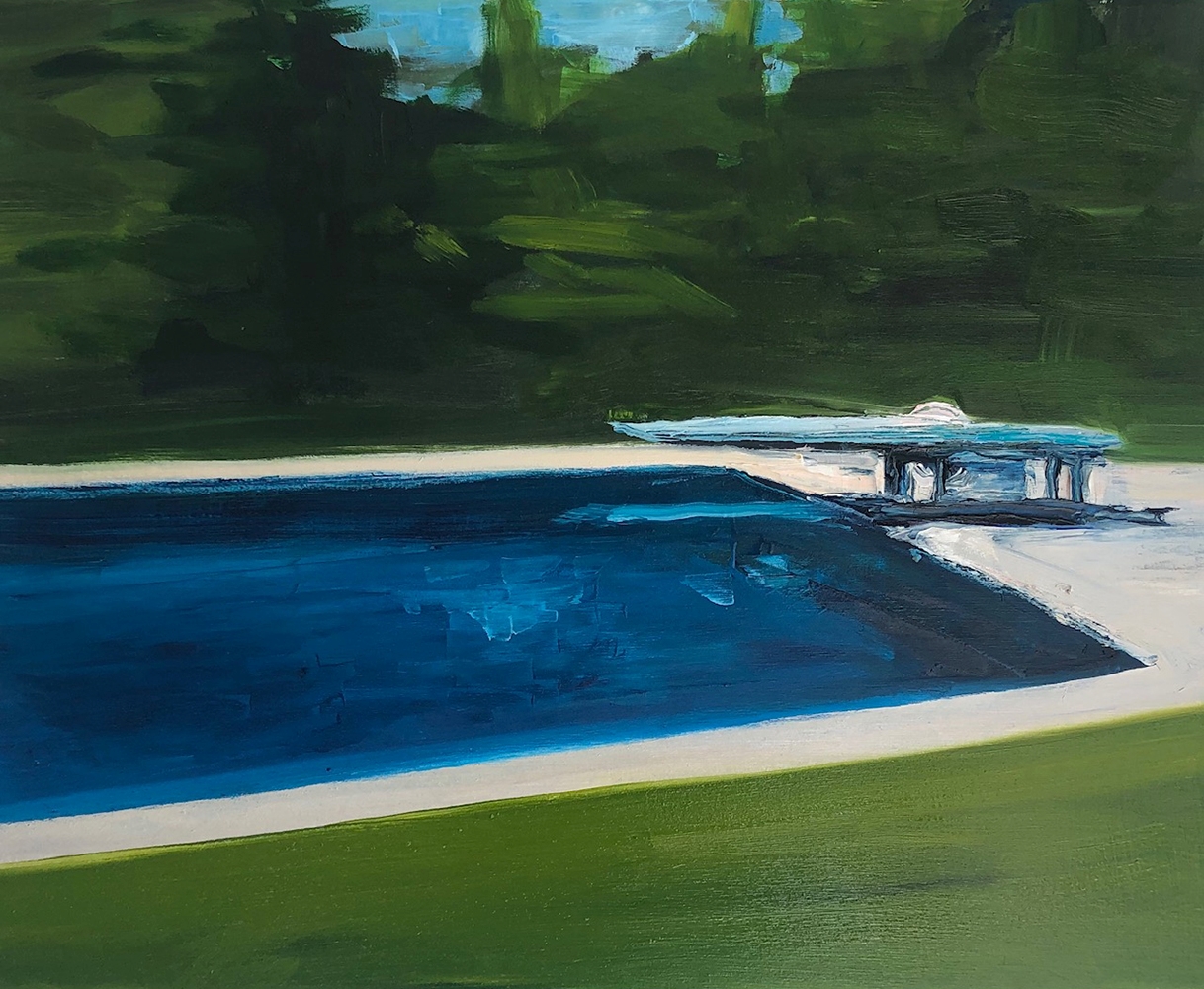
(Free!) Seattle Art Fair alternatives
If you don’t feel like heading inside the vast array of white-cube galleries at Seattle Art Fair (an arrangement that bears an unfortunate resemblance to a rat maze science experiment), never fear. You can still kick off August with a big-time art fix — without even paying admission. Linda Hodges Gallery (which also has a booth at the fair) is exhibiting new work by Seattle painter Jennifer Beedon Snow, whose cool suburban pools beckon languidly. In nearby Occidental Square, Davidson Galleries is holding the annual Contemporary Northwest Print Invitational, featuring an amazing array of graphic and painterly prints, woodcuts, letterpress illustrations and linocuts by local luminaries, including Jennifer Ament, Jueun Shin, Juliana Kang Robinson, Aidan Sakakini and Bradley Taylor. In the Central District, new arts space Wa Na Wari, which focuses on POC creatives, is hosting a powerhouse show of arts illuminati, including textile genius Marita Dingus, installation artist Henry Jackson-Spieker, crochet queen Xenobia Bailey and fiber artist Nastassja Swift. And this weekend marks your final chance to see yəhaw̓, the vibrant collection of indigenous works at the new ARTS space at King Street Station. –B.D.
If you go: See details at websites linked above.
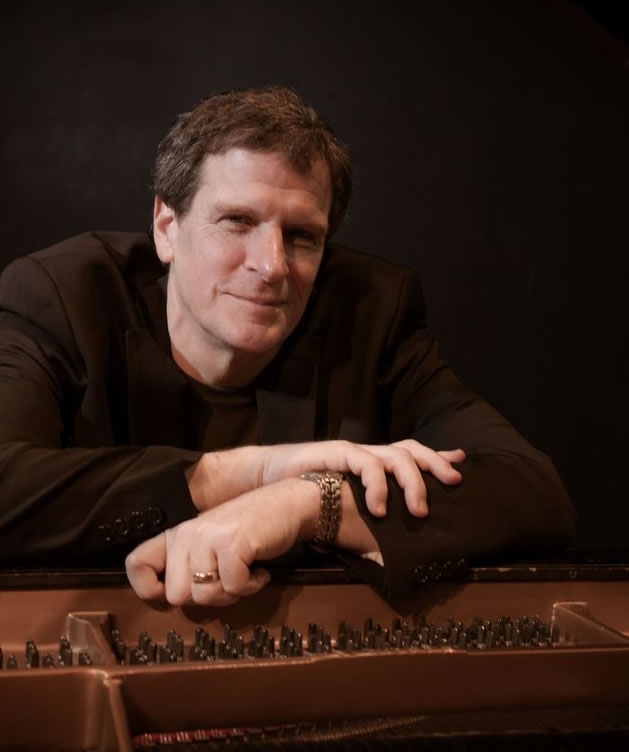
Last call for jazz at Tula’s
After much turmoil, the Seattle Landmarks Preservation Board finally voted to “save the Showbox,” but that doesn’t necessarily mean it will remain a music venue. Meanwhile, a similarly beloved music stage has announced it will shutter, at the end of September. Tula’s Restaurant and Jazz Club has served up everything from bebop to grunge jazz for the past 26 years. But as the Belltown block it sits on (bookended by Mama’s Cantina and The Crocodile) is redeveloped, Tula’s has been unable to find an affordable alternative space. While the neighborhood’s other jazz venue, Dimitriou’s Jazz Alley, can be counted on to bring in big-name out-of-towners, Tula’s is known among Seattle jazz cats as a stage that welcomes local musicians and singers. Bid the venue a fond farewell by attending a local jazz concert in the coming weeks — such as with esteemed pianist Randy Halberstadt (Aug.1), legendary songstress Greta Matassa (Aug. 2), or the one, the only Overton Berry (Aug. 8) — and help play 'em out in style. –B.D.
If you go: Tula’s Restaurant and Jazz Club, only through the end of September. Dates, times and prices vary.
Morgan Thorson: Still Life
If you aren’t familiar with the term “durational art,” it’s pretty straightforward: it refers to a performance that takes place over a longer span of time than you might think is standard (or particularly comfortable for participants). The elapsing time is critical to the experience. But instead of the duration of, say, the line at the Department of Motor Vehicles (during which time stands still), a durational art piece is intended to prompt a shift in the audience’s way of seeing — and the performers’ experience — over time. In the case of Minneapolis-based choreographer Morgan Thorson’s piece “Still Life,” the duration is five hours, during which a hardy team of dancers from Seattle, Portland and Minneapolis will perform a dance that explores the “death of choreography.” Co-presented Base Experimental Arts + Space and On the Boards), “Still Life” starts with species extinction as an object lesson (fossils have been painted on the walls), and moves through a repeated dance cycle that slowly evolves (as a dancer leaves, a new sound emerges, or different steps are added). As with all humans, the dancers adapt or fade away. But like a trilobite pressed into a rock, an impression endures. –B.D.
If you go: Base Experimental Arts + Space in Georgetown, Aug. 1 and Aug 2: 4-9 p.m. Aug. 3 and Aug. 4: 3-8 p.m. Drop in/out any time during the performance. ($12-$28)
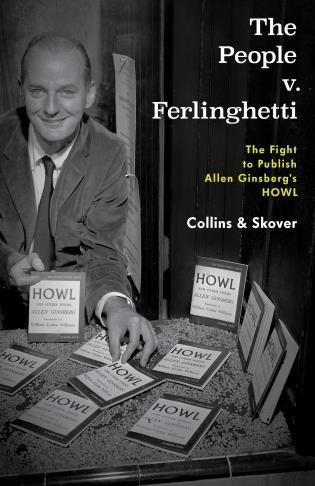
The People v. Lawrence Ferlinghetti
“I saw the best minds of my generation destroyed by madness, starving hysterical naked,” begins Allen Ginsberg’s landmark poem “Howl,” an anguished, Beatnik-era broadside, an outpouring on behalf of the outcasts of a dominant, conformist 1950s culture — and a celebration of jazz, sexuality and “Angel-headed hipsters burning for the ancient heavenly connection to the starry dynamo in the machinery of night.” Printed in 1956 as a pocket-sized chapbook by City Lights Press publisher and fellow poet Lawrence Ferlinghetti, Ginsberg’s opus caused an immediate sensation. After copies of his Howl and Other Poems were seized in 1957 by U.S. customs officials as they were being exported to London, Ferlinghetti was indicted under California law on obscenity charges, and a trial ensued. Dave M. Skover, a University of Washington law professor and free speech expert, will read at Elliott Bay Books from his book The People v. Ferlinghetti: The Fight to Publish Allen Ginsberg’s Howl (Rowman & Littlefield), a new account of the controversy over the poem. It was co-written by Ronald K. L. Collins, editor of the First Amendment News blog. Their book records in detail the emergence of “Howl” as a cultural lightning rod, and the steadfast mission of Ferlinghetti (now 100, and still owner of City Lights Books in San Francisco) to protect every American’s right to “freely speak, write, and publish his sentiments on all subjects,” as guaranteed by the 14th Amendment of the U.S. Constitution. –M.B.
If you go: Elliott Bay Books, Aug. 4 at 3 p.m. (Free.)
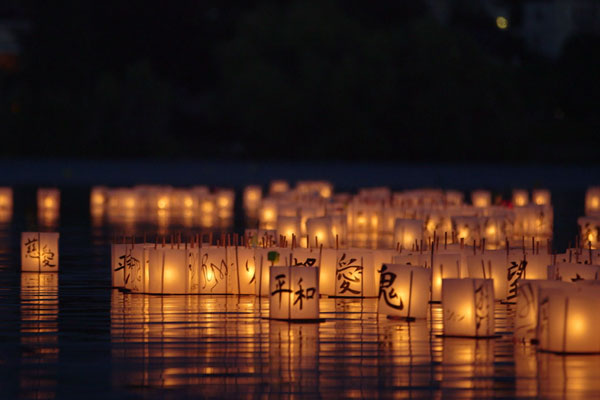
From Hiroshima to Hope
Every August since 1984, a group of community volunteers called From Hiroshima to Hope has marked the anniversary of the atomic bombings of Hiroshima and Nagasaki in World War II with a beautiful call for world peace. A thousand or so people descend on Green Lake to construct and decorate paper lanterns, which are then set afloat in a solemn, waterborne tribute based on a Japanese tradition said to lead souls over to the other side. Now the largest such event outside Japan, the Green Lake evening includes Seattle Kokon Taiko drummers, artist Yukiyo Kawano’s “Little Boy (folded)” (a full-scale, fabric replica of the Little Boy bomb), a gospel song by Patrinell Wright, Latin music by Correo Aereo Trio and a poem by Seattle Youth Poet Laureate Azura Tyabji. Organizers emphasize that the event is inclusive, intended to recognize all victims of war. –B.D.
If you go: From Hiroshima to Hope, northwest shore of Green Lake, near the Bathhouse, Aug. 6. Festivities start at 6 p.m., lanterns launch at 8:15 p.m. (Free)
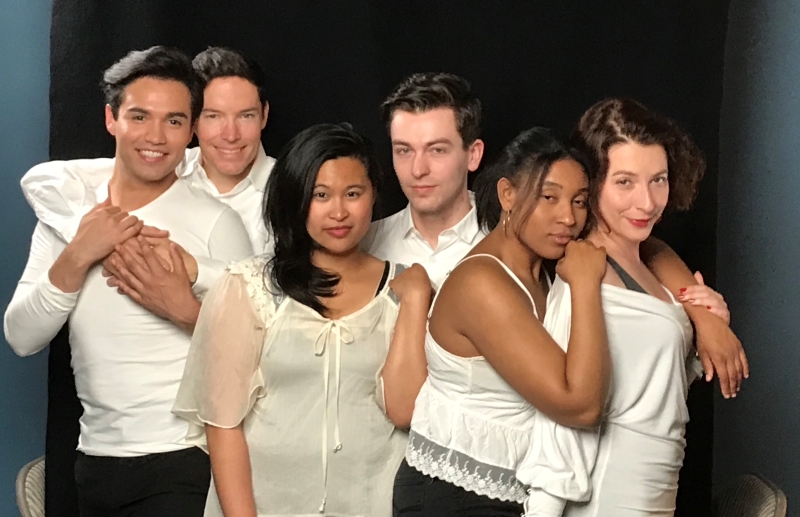
Salty
Remember those male penguins, Roy and Silo, whose coupling at the New York Aquarium (reported in 2004 by the New York Times) pretty much trashed the idea that homosexuality is: (a) aberrant behavior confined to one species (ours), and (b) the result of social pressures or mental illness, rather than biological preference? Since then, researchers have discovered gay wooing and mating exists between Australian, British and Danish penguins, and between various other species including vultures, pigeons, bats and giraffes. But let’s get back to those adorable penguins, shall we? The duo is the focus of Salty, the AJ Clauss play about a pride of gender nonconforming birds on display in a zoo when the world is about to end (and the human zookeepers struggling to maintain their exhibit). But unlike the popular children’s books about Roy and Silo, Salty is aimed at adults. And because penguin stars weren’t available, it’s performed by human actors who double as the big birds and the zoo staffers. ReACT Theatre presents the West Coast premiere of Salty in repertory with a new work, Gills! Gills! Gills!, a trio of short plays by Celeste Mari Williams that offer a seriocomic glance at the weird, wide world of mating rituals — specifically, the pairing of seahorses, anglerfish and (oy) octopuses. –M.B.
If you go: Salty at 12th Avenue Arts through Aug. 18. ($18-$24)

